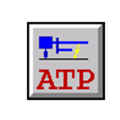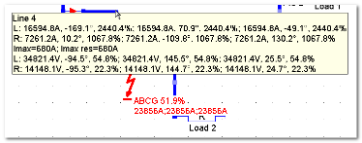

Main Features
Diagram Viewer
- Creating Diagrams based on the .PL4-Files of the ATP
Processor for COMTRADE-Files
- Converting .PL4-File to COMTRADE-File
- Creating COMTRADE based Diagrams
- Analysing COMTRADE based Signals
Integrated Signal Analysis Methods
- Based on the Discrete Fourier Transformation
- Typical for Protection Relays
- DFT Windowing
- Frequency Spectrum
- Harmonic Analysis Presented as a Bar Diagram
- Calculation of the frequency dependent Power Network Impedance Z(f)
- Calculation of TRUE R.M.S Values
Short-Circuit Analysis
- Overcurrent Element I>
- Undervoltage Element V<
- Overvoltage Element V>
- Short-Circuit Data displayed in Tooltips in the Power Network Graphics
- Voltages and currents displayed in p.u. related to nominal values
- Phase-to-phase and phase-to-ground impedances as usual for Distance Protection Relays
- Calculation of Power Losses e.g. for Lines, Transformers
Short-Circuit Calculation acc. IEC 60909 (VDE 0102)
ATPDesigner also supports the most important features of the short-circuit calculation acc. the standard IEC 60909-0:2001, July 2002 (VDE 0102). This feature can be also used for educational purposes.
Please note, that it is recommended to study the standard IEC 60909 before using this feature of ATPDesigner.
Please note, that it is recommended to study the standard IEC 60909 before using this feature of ATPDesigner.
Protection Relaying
- Directional Overcurrent Protection using Probes and Short Circuit Results
- Distance Protection: Phase-to-phase and phase-to-ground impedances calculated by Short Circuit Results and presented in Tooltips
- IDMT Protection
- Ground Fault Protection
- Differential Protection (2- and 3-legs)
- Displaying TRIP Commands directly in the network graphics
- Testing Protection Schemes
- Testing the dynamic behavoiur of protection algorithms using MODELS
- Protection Relaying Algorithms implemented in MODELS e.g. PTOC: Protection Time Overcurrent
-
- Distance protection with two zones
- can be Combined with a circuit-breaker to simulated real-time tripping

